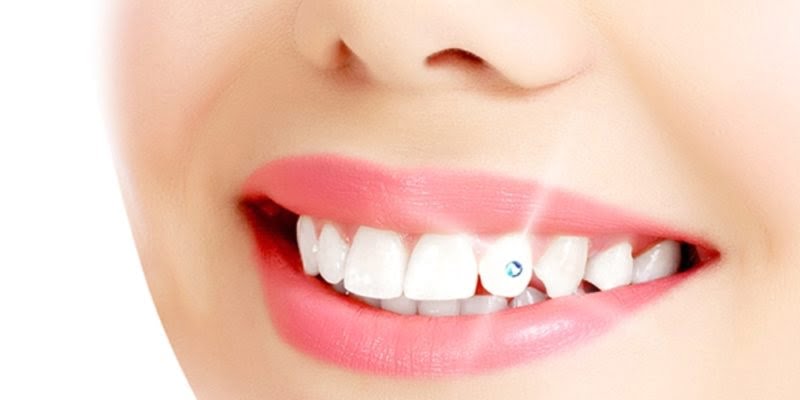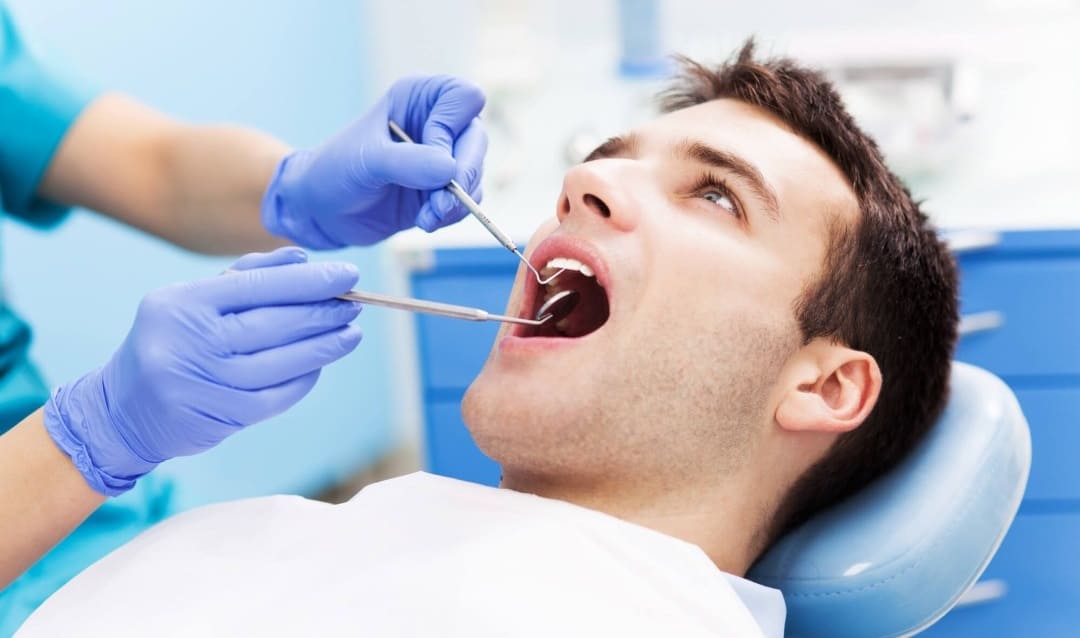Tooth Piercing – Procedure, Complications, Aftercare 2025

Tooth piercing, also known as dental jewelry or tooth gems, refers to the practice of puncturing a small hole in a tooth and inserting a small decorative jewel. While relatively uncommon in mainstream Western culture, tooth piercing has seen a surge in popularity in recent years, especially among teenagers and young adults. However, before rushing out to get a pierced tooth, it’s important to understand exactly what the process involves and be aware of the potential risks and complications. This article provides a comprehensive overview of tooth piercing, including the piercing procedure, aftercare, risks and safety concerns, cost, removal, and more.
What is Tooth Piercing?
A tooth piercing is a type of body modification where a small decorative jewel or stud is inserted into a tiny hole drilled into the enamel of a tooth. The jewel sits on the surface of the tooth and is secured with an adhesive. Tooth piercing first emerged as a trend in the 1990s, but has recently regained popularity.
Tooth gems, twinkles, or grills are small decorative items shaped like gems, stars, hearts, or other shapes that are temporarily bonded to the enamel of the tooth. Gold or diamond twinkles on the incisors (front teeth) is the most popular dental jewelry choice. The purpose of tooth jewelry is solely decorative.
Tooth Piercing Procedure
Tooth Preparation
Getting your tooth pierced is not as simple as going to a piercer and having them drill a hole in your tooth. The tooth must be properly prepared first to avoid damaging it. Here are the steps involved:
- Impressions– An impression of your teeth will be taken so that a dental lab can create a custom-fitted acrylic shield that will protect your gums and adjacent teeth during the piercing process.
- Cleaning– The tooth to be pierced will be thoroughly cleaned to remove any plaque, tartar, or debris.
- Surface roughening– The area on the tooth where the jewel will be placed is slightly roughened to create a better bonding surface for the adhesive. This is done with a small dental drill.
- Etching– The roughened surface is etched with an acidic gel to demineralize the enamel and encourage better bonding with the adhesive.
Piercing the Tooth
Once the tooth is prepped, the actual piercing process can begin:
- A local anesthetic gel is applied to numb the area being pierced.
- Using a precision high-speed dental drill, the jeweler will drill a small hole entirely through the enamel layer of the tooth, penetrating the dentin layer beneath.
- The hole follows the natural contour lines of the tooth anatomy. It is extremely small, usually less than 1mm in diameter.
- A saline solution is used to flush the hole and keep it free of tooth debris while drilling.
- The depth of the hole is carefully controlled to avoid hitting the pulp chamber of the tooth, which could cause severe pain and nerve damage.
- Once finished, the newly pierced hole is thoroughly rinsed.
Jewel Placement
With the hole drilled, it’s time to insert the decorative jewel or gem:
- The tooth jewel is selected and can be custom-fitted if desired.
- It is grasped with dental pliers and dip-dried.
- The bonding agent, usually a dental resin composite, is applied to the pierced hole.
- The jewel is then gently pushed into the hole and held firmly for 30-60 seconds until set. Additional bonding agents may be applied around the gem to seal it.
- Any excess adhesive is carefully removed from the tooth surface.
- Finally, a curing light is used to harden the resin fully.
The tooth piercing procedure generally takes 30-60 minutes, depending on the number of teeth being pierced. Most clients choose to adorn 1-3 teeth with decorative gems.
Aftercare for Tooth Piercings
Caring for your new tooth piercing properly is important to avoid complications and help it last. Here are some tooth-piercing aftercare tips:
- Oral hygiene– Continue brushing and flossing normally, taking care of the piercing. Use non-alcohol mouthwash to keep the area clean.
- Eating and drinking– Stick to soft foods for a few days. Avoid hard, crunchy, or chewy foods that could dislodge the jewel. Don’t drink alcohol or hot liquid, which can loosen the bond.
- Tongue positioning– Be mindful of where your tongue rests in your mouth,th as excessive tongue pressure on the jewel can dislodge it prematurely.
- Rebonds– Expect to need periodic rebonding of the tooth jewel every 4-12 months as the adhesive bond weakens over time. See your piercer promptly if it starts to loosen or fall out.
- Chipping– Avoid chewing on hard objects, fingernails, pens, or other items that could chip your decorated tooth and damage the piercing.
Proper oral hygiene and aftercare will help your tooth piercing last longer and reduce complications. Most piercings last 6-12 months before requiring replacement.
Tooth Piercing Risks and Safety Concerns

While appealing to many, tooth piercings do involve some risks and safety concerns to consider beforehand:
- Nerve damage– Piercing too deeply into the tooth can strike the pulp chamber, causing severe pain and irreversible pulp necrosis.
- Tooth fracture– Weakening tooth structure with a hole increases the risk of cracking or chipping the tooth.
- Tooth decay– Piercing can allow bacteria to enter the tooth, leading to decay under or around the jewel.
- Gum recession– Drilling too close to the gumline can cause a recession of the gums around the piercing.
- Tooth loss– In the worst cases, a severe infection of the pierced tooth may require extraction.
- Aspiration risk– Accidentally inhaling or swallowing a dislodged jewel poses a choking hazard.
- Oral trauma– Piercings are prone to being knocked out if bitten down on hard.
To reduce risks, have an experienced licensed dentist do the piercing, get regular dental checkups, practice excellent oral hygiene, and promptly replace loose jewelry. Those with disorders like bruxism that put added pressure on teeth may not be good candidates.
Talk to your dentist about any concerns and whether tooth piercing is appropriate for your particular oral health situation.
Cost: How Much Do Tooth Piercings Cost?
Pricing for tooth piercings can vary greatly depending on factors like:
- Number of teeth– Each pierced tooth costs separately. A single tooth may range from $40-$100, while multiple teeth or an entire smile of “grillz” could cost several hundred to over a thousand dollars.
- Jewel type– Basic plastic gems are the cheapest. Silver or gold-plated studs cost more. Solid gold, platinum, or diamond jewels are the most expensive.
- Customization– Fully customized fit and shaped jewels are pricier than generic designs.
- Dentist fees– Prices are higher from licensed dentists compared to body piercing shops.
- Aftercare rebonding– Periodic rebonding work can cost $20-$60 per tooth every 4-12 months.
Additional costs may include tooth impressions, anesthetic fees, and dental checkup appointments related to the piercing. Many dental insurance plans do not cover cosmetic tooth jewels.
Price shouldn’t be the top priority when getting dental work like this done. Select an experienced professional and avoid bargain prices that may be unsafe.
Tooth Piercing Removal
Tooth jewels are not intended to be permanent and will eventually fall out on their own when the adhesive bond breaks down over 4-12 months. However, if you wish to remove tooth gems sooner, here’s how:
- Naturally, the jewel will eventually loosen and detach on its own as the bonding weakens. Don’t force it yourself if still firmly intact.
- With floss– If loose enough, dental floss may be used to gently lift the jewel off the tooth surface. Take care not to scratch the enamel.
- Dental tools– Your dentist can use special tools like scalers to safely pry off the gem if struggling to remove it yourself.
- Drilling– The dentist may need to drill away residual bonding resin if it remains stuck on the tooth after jewel detachment.
- Polishing– After removal, the tooth’s puncture hole can be smoothed and polished down to restore a natural appearance.
Let your piercer or dentist remove any stubborn tooth jewels. Don’t pick at them aggressively yourself. The hole left in the tooth is permanent, but will be small and unnoticeable after polishing.
Tooth Piercing: Pros vs Cons
Interested in getting a tooth gem? Before deciding, weigh the potential advantages and disadvantages:
Pros:
- Unique self-expression
- Youthful, playful appearance
- Can be easily hidden for work/school if needed
- Easily reversible and not permanent
- Less invasive and lower risk than tongue or lip piercings
Cons:
- Risk of tooth and gum damage if not done properly
- Higher risk of tooth decay around the piercing
- May interfere with eating and speech
- Easily damaged or dislodged
- Requires special oral hygiene care
- Not acceptable in some professions (e.g., healthcare)
- Stigma – some consider it unprofessional
Talk to your dentist about whether a tooth piercing is a good option for you based on your oral health and lifestyle factors. While becoming more mainstream, it’s still considered an alternative body mod.
Tooth Piercing: Is It Safe? Tips to Reduce Risks
While tooth piercings won’t be recommended by most dentists, they can be done more safely by following these precautions:
- See a licensed dentist– Never go to an untrained body piercer. Have a qualified dentist do it?
- Get a consultation– Discuss the pros/cons with your dentist beforehand. Make sure your teeth are healthy enough.
- Pick back teeth– The tongue’s pressure makes front teeth riskier. Go for sturdier back molars or premolars if possible.
- Use medical-grade jewels– Ensure any metals or plastics used are certified biocompatible oral-grade material.
- Follow aftercare diligently– Stick closely to all aftercare guidelines given to you. Seek professional help promptly if issues arise.
- Avoid certain conditions– Don’t get tooth jewels if you have bruxism, gum disease, cavities, or other existing oral issues.
- Inspect regularly– Check for any jewel loosening, odd sensations, or other changes indicating problems.
- Consider alternatives– Temporary tooth tattoos or attachable jewels avoid piercing risks.
While not without risks, carefully vetted tooth piercings done under optimally controlled conditions can be reasonably safe for most healthy individuals. Weigh your options and discuss thoroughly with a dentist first.
Tooth Piercing FAQs
Here are answers to some frequently asked questions about tooth piercings:
Does getting your tooth pierced hurt?
The piercing procedure shouldn’t be painful since a local anesthetic is used, but there can be mild soreness afterward for a few days. There may be some temperature sensitivity while eating or drinking hot or cold foods.
Do tooth piercings damage your teeth?
There are risks of tooth damage, including fractures, chipping, and increased susceptibility to decay. However, a properly done piercing that follows safety guidelines minimizes this damage risk when cared for properly. The hole itself is small and inconsequential.
How long do tooth piercings last?
On average, the tooth piercings last 4-12 months before the adhesive bond begins to fail and requires replacement. With excellent oral hygiene and care, some may last several years. Longevity depends on factors like location, jewelry size, and individual biology.
Can a dentist refuse to do a tooth piercing?
Yes, it’s at the dentist’s discretion whether they will perform tooth-piercing procedures. Many dentists choose not to offer this elective cosmetic service due to the risks involved nd lack of medical necessity. However, some will accommodate patient requests under the right circumstances.
Do tooth piercings set off metal detectors?
It’s unlikely. While tooth jewels are made of metal, they contain very minute amounts insufficient to set off most security metal detectors. However, they may occasionally show up on airport body scanners depending on the jewel size and material composition.
How long should I wait to change the jewel?
It takes around 4-6 weeks for the pierced tooth to completely heal and the bond to fully stabilize. Changing jewels too soon risks disrupting the fresh piercing. After it has healed, jewels can be swapped out as desired during rebonding sessions.
Tooth Piercing: Is It Worth It?
While increasingly popular, tooth piercings remain controversial due to their associated risks and safety concerns. At the end of the day, it’s a personal choice whether potential benefits like uniqueness and self-expression outweigh the possibility of tooth damage or dental complications. Carefully considering your specific oral health, professional environment, and lifestyle can help determine if it’s the right option for you.
If, after thorough research and consultation with your dentist, you feel ready to take the plunge, be sure to follow safety best practices and oral aftercare diligently. With the right approach, tooth piercing can be reasonably low risk and allow you to decorate your smile uniquely.
Conclusion
Tooth piercing can allow creative self-expression and a way to decorate teeth with cool jewels. However, the procedure does require drilling into tooth enamel, which poses some risks of damage. Careful consideration of safety issues and your situation is needed to decide if tooth gems are right for you. If choosing to get pierced teeth, see an experienced licensed dentist and follow all aftercare guidelines to the letter. With safety as the priority, tooth piercings can offer a fun way for some people to artistically adorn their teeth temporarily.



